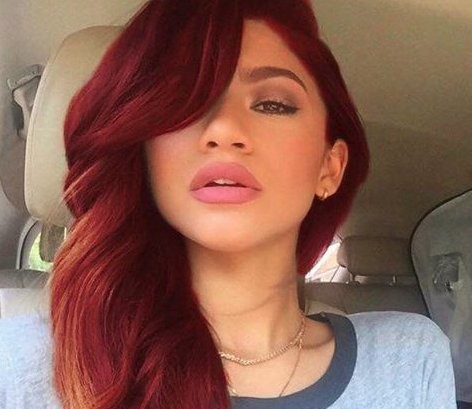
By Edward T. Bowser
For The Birmingham Times

The face of pop culture is changing.
According to recent reports, pop star Zendaya is in line to play the role of Mary Jane Watson in Marvel’s upcoming “Spider-Man: Homecoming” film.
It’s a massive opportunity for both the budding actress and all women of color: Superhero films are big business, with Marvel’s last film, the critically acclaimed “Captain America: Civil War” raking in $1 billion worldwide.
Marvel Studios reintroduced the iconic Spidey character in “Civil War” to rave reviews, with a spinoff movie set for July 2017. If all goes well, Zendaya will step into the shoes of Spider-Man’s longtime love interest, becoming the first woman of color to play that role on the big screen.
While many fans rejoiced over the casting news, catcalls from critics were almost as deafening. In their eyes, tapping a black woman to portray a comic character who is widely known as a Caucasian redhead somehow does a disservice to the source material.
“Pandering.” “PC BS.” “Contrived.” “Unnecessary.” Those are just a few of the maligned reactions that have crossed my social media timelines in the past week.
Well, the only reactions fit for publication, anyway.
I’d wager that many of those critics don’t consider themselves bigots or separatists – they simply don’t want the insulated world they’ve grown up with to be altered by outsiders.
Sorry, but that narrow-minded mentality is the breeding ground for bigotry.
Allow me to hit my fellow nerds with a dose of reality: This is 2016. Change is here.
This conversation is much deeper than a cartoon character’s hair or eye color. This is about representation and the need for more minority faces on our screens.
The criticism Zendaya is facing isn’t new. We heard it during last year’s Fantastic Four reboot – some fans hemmed and hawed when the Michael B. Jordan took on the role of Johnny Storm, a traditionally white character, with the largest complaint being: The Human Torch CAN’T be black because his sister is white!
It’s as if the concept of blended families never existed.
Although the movie wound up quite a mess, Jordan was one of films few bright spots. Literally.
We heard it again during the first trailer for “Star Wars: The Force Awakens” when John Boyega removed his bulky helmet, signifying the first black Stormtrooper of record. Once again, critics balked, with the frail logic being there CAN’T be a black Stormtrooper because Stormtroopers are all clones of a guy from New Zealand.
Trust me, long story there. I won’t bother traveling down that rabbit hole.
Regardless, it’s irrelevant, especially when the film netted $529 million worldwide its opening weekend. Convoluted backstories didn’t stop audiences from being captivated by a thrilling story and a stirring performance from Boyega.
As a fan of the world of comics, I can relate to the desire to cling tightly to source material. But as a black man in a world that often overlooks the contributions of my community, I’m more excited to see my culture reflected in that material.
During my childhood, when I constantly watched reruns of Adam West’s campy “Batman” 1966 TV series, I remember being shocked when Eartha Kitt replaced Julie Newmar as Catwoman. But with Kitt’s appearance, I suddenly realized that in more than 100 episodes of that show, Batman and Robin almost never interacted with anyone of color. Gotham City couldn’t have been THAT devoid of melanin.
Kitt brought a much-needed dynamic to the show, one that more accurately reflected the real world I lived in.
It’s a point that critics of inclusion fail to miss. From Batman to Spider-Man, many of comics most beloved characters were created in the early- to mid-1900s, an era when cultural sensitivity was at its lowest point. There were scant few characters of color – many of them relegated to sidekicks or comic relief. The Mary Jane Watson character, for example, debuted in June 1965, two months before African-Americans were guaranteed the right to vote.
It’s imperative that those characters, just like the era they were created in, evolve with the times.
We saw it with Samuel L. Jackson’s Nick Fury in the current Marvel Cinematic Universe. The Fury I grew up watching was a white man with gray hair at his temples; Jackson’s bald, scowling character has become so popular that he’s replaced the original in comics. We’ll see that evolution continue with the upcoming Luke Cage series on Netflix – Mike Colter will play a hard-nosed version of the hero who bears little resemblance to the character’s jive-talking blaxplotation roots.
Change isn’t just good. It’s necessary.
That’s the great thing about these characters – their stories are malleable. Mary Jane Watson’s identity isn’t tied to her ethnicity like the African princess Storm of X-Men fame. She’s simply an aspiring actress who falls for Spider-Man. That story can be told through any lens.
Pop culture – especially the realm of comics – has always been a reflection of reality. In 2016, here’s that reality: People of color are more than just one-note characters. We’re leaders and trendsetters.
We’re heroes too.
Let Zendaya do what has been so long overdue – inspire girls of color to broaden their imaginations.
Let them see heroism in a face that looks like their own.
Edward T. Bowser is a Birmingham, Ala.,-based freelance writer. He can be reached via email at ebowser79@gmail.com. You can read more of his pop culture music musings at SoulInStereo.com.




